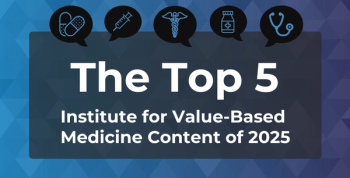
Standardization of Biopsy Testing and Interpreting Data
Joseph Alvarnas, MD: All of this is predicated upon actually getting good tissue biopsies that can inform the decision-making process. That would seem to be a key step that could be messed up based on who’s doing it. If you have a trial that’s dependent upon this kind of quality pathology, how do you ensure that the quality of the starting material that allows you to make the decisions is uniform? How do you achieve some sort of standardization? As someone paying for healthcare, you can probably have an impact upon that.
John Fox, MD: Yes. If somebody were to promulgate standards, I could certainly try to enforce those. It raises the other question then, too: If you need a tissue diagnosis, should you use circulating tumor DNA in lieu of a tissue sample itself? Is that an adequate substitute? Some payers pay for those circulating tumor DNA markers when there’s not adequate access to, or no access to, tissue today.
Robert Carlson, MD: That’s a huge problem, and it’s a huge problem to identify what tissue to biopsy. If a patient has multiple sites of disease, do you biopsy one? Do you biopsy multiple? Even within a given site of metastasis, there can be heterogeneity within that single site of metastasis. When, in the course of disease, do you biopsy? Do you depend upon the biopsy at diagnosis? Do you depend upon the biopsy at recurrence? With each subsequent therapy, are you forced to re-biopsy? Samples that you can get from pulmonary metastasis with thoracic biopsies are much smaller and more difficult to get than a skin biopsy from a dermal metastasis.
And then there’s the laboratory component. Which laboratory is doing the test? Are they CLIA or CAP certified? Even within the CLIA- and CAP-certified laboratories, there may be heterogeneity. Which of those labs really gives you the most valid, reliable result? And then there’s the problem of interpretation. The pattern of gene metastasis or mutations that happens can be very complex, and most institutions that do that sort of analysis have tumor boards where they have multiple, different experts who have to come together to interpret that. Try to do that in a private practice. It’s incredibly difficult to do, so there is a whole series of levels of complexity here that we’re going to have to figure out, through these large national trials, how to navigate.
John Fox, MD: I love this issue—or, I’m concerned, too, about this issue—of tumor heterogeneity. I learned this cool word, “metastasum.” Do you biopsy the primary tumor or the metastasum? Interestingly, the circulating DNA would sample all the circulating tumors, and there are some limitations with that. I’m not promoting that. But the idea, as a payer, that I’m going to pay every 6 months for a circulating DNA test or a biopsy is a little unwieldy.
There’s a much more mundane issue, though, and that is regarding hospitals who believe they own the tissue sample and their willingness to send it out to a third party. In fact, many hospitals today are developing their own ability to do multigene sequencing or whole DNA sequencing, which raises another quality issue. How do I know the results are comparable? And even between these large entities that do sequencing, they don’t always get the same answer. So, I think we’re entering an era where, if this is going to become commonplace, we need standards. I’m not sure who promulgates those, but it’s probably the federal government.
Newsletter
Stay ahead of policy, cost, and value—subscribe to AJMC for expert insights at the intersection of clinical care and health economics.







































